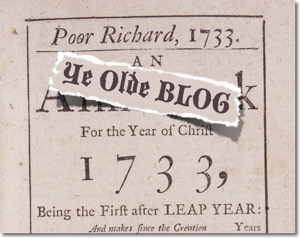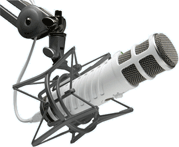Podcast: Play in new window | Download
People have been blogging for centuries.
 Paul Boomer and I have taught at Wizard Academy on blogging. Occasionally, Roy Williams would enter the room and start asking about what a blog really is. One of the things he said was that he had never been given a satisfactory answer to that question. I feel that he was trying to make it much too complicated. He always talked about the technical definitions and even the writing techniques of a blog, which I believe are irrelevant. The fact that you’ve got an RSS Feed or some kind of blogging platform is also irrelevant because, as far as I’m concerned, people have been blogging for centuries.
Paul Boomer and I have taught at Wizard Academy on blogging. Occasionally, Roy Williams would enter the room and start asking about what a blog really is. One of the things he said was that he had never been given a satisfactory answer to that question. I feel that he was trying to make it much too complicated. He always talked about the technical definitions and even the writing techniques of a blog, which I believe are irrelevant. The fact that you’ve got an RSS Feed or some kind of blogging platform is also irrelevant because, as far as I’m concerned, people have been blogging for centuries.
Are you delivering regular “content”?
Consider a church, where a pastor gives a sermon every week. Giving that sermon every week makes a blogger out of the pastor. Any leader who has a message that is delivered to an audience every week is a blogger as far as I’m concerned. OK, do you want to split hairs? A blogger is someone who has a newer, fancier, technical version of a printing press or a broadcast transmitter. Before those technologies, if you wanted to communicate with people on a regular basis, you had to have a meeting place where people came to hear you speak. Think about the Pope. He stands at his window once a week at St. Peters with people below listening to him. He’s a blogger.
Really, a blog is just a communications tool. Consider any regular radio show. If you’re a radio personality, then you are absolutely a blogger…a communicator. Think about Ben Franklin and his Almanac, that was a blog. The Federalist Papers were an anonymous blog that attempted to influence people. Paul Harvey used to say, “Stand by for news!” but the title of the program was Paul Harvey News and Commentary. Paul Harvey was definitely a blogger. The President of the United States, who gives a Saturday morning address from the White House, is yet another blogger. Think of David Letterman and Johnny Carson. Back in the day, even if you weren’t going to stay up and watch the Tonight Show, you would at least listen to Johnny’s monologue because he had something to say every night.
Let’s return to Roy Williams’ question, “what is a blogger?” Roy spends 20 to 30 hours a week writing his Monday Morning Memo. He carefully chooses his words and is a very disciplined writer. He considers bloggers to be less disciplined writers. However, not all bloggers (or writers) want to write the way Roy writes. Some may want to be a little more casual and that’s okay. The most important question is, “are you getting your message out?” As far as I’m concerned, Roy was actually blogging before the internet. He used to send out his Monday Morning Memo by fax. It would take all night long and he burned up a few fax machines sending those out. The Monday Morning Memo is simply his way of creating content every week. The first few years of that content turned into three bestselling books and he’s written much more since then.
So, a blogger is simply someone who has something to say on a regular basis.
If you want to represent your company, and you have interesting things to say about it, then you should be the one to write about it. Don’t turn it over to an intern or an outsider. If you don’t have the confidence in your abilities, then you can turn to us, hire Shortcut Blogging. We will set you up with a microphone, let you speak your mind, and we will turn your words into good writing. Our professional writers will take your words and skillfully transform them into a blog that speaks your mind. They’ll still be your words to let you communicate with your audience and make you look good.
Simply put, a blogger is someone who has a consistent message to deliver. Don’t let the writing hold you back. If you can’t write or are too shy to write, then we have the solution.
…and now you know the rest of the story.
